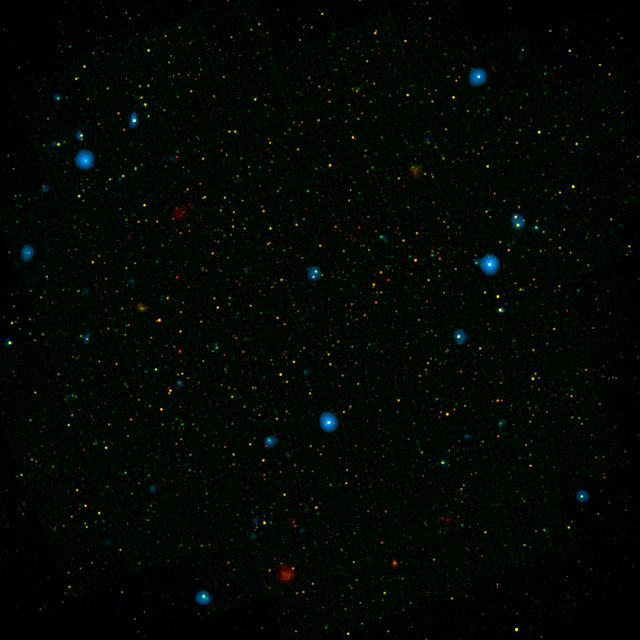
An article published in “The Astrophysical Journal” describes a research on the so-called Cosmic X-ray Background (CXB). A team of researchers led by Fiona Harrison of Caltech in Pasadena used NASA’s NuSTAR space telescope to distinguish a good part of the X-ray emission coming from supermassive black holes.
Many active black holes whose emissions contribute to CXB were identified thanks to NASA’s Chandra space telescope. The problem was with the ones that emit high energy X-ray, which in that kind of chorus that “sings” the CXB are the highest-pitched “voices”. The NuSTAR (Nuclear Spectroscopic Telescope Array) space telescope, launched in June 2012, is specifically intended to detect that type of X-ray. In technical jargon, it “resolved” CXB sources.
In the image, the blue dots indicate the high-energy X-ray sources found by the NuSTAR space telescope, which can detect emissions between 8 and 24 kiloelectron volts. The other colored dots indicate black holes that emit lower energy X-rays, detected by the Chandra space telescope, which can detect emissions between 0.5 and 7 kiloelectron volts.
Fiona Harrison is also the principal investigator of the NuSTAR mission and stated that the use of the space telescope led the high energy X-ray background resolved from 2% to 35%. In fact, NuSTAR made it possible to detect supermassive black holes that before were obscured by thick layers of gas and dust because only high energy X-rays can pass through them.
It’s not the first time that the NuSTAR space telescope is used in this way: a little over a year ago the discovery of five supermassive black holes hidden by dust and gas was announced. In this new research, the identification of black holes wasn’t carried out in a study focused on them but with the broader aim to make sense of the X-ray background. However, these results will also be useful to study supermassive black holes.
Astronomers believe that it’s normal for galaxies to have a supermassive black hole at their center and the Milky Way has one as well. Identifying those in other galaxies allows to expand the catalogue of those available to be studied. This research literally turned a lot of what was noise in distinct voices but will also help the studies of supermassive black holes and their changes over time, which have a significant influence on the galaxies that host them.

